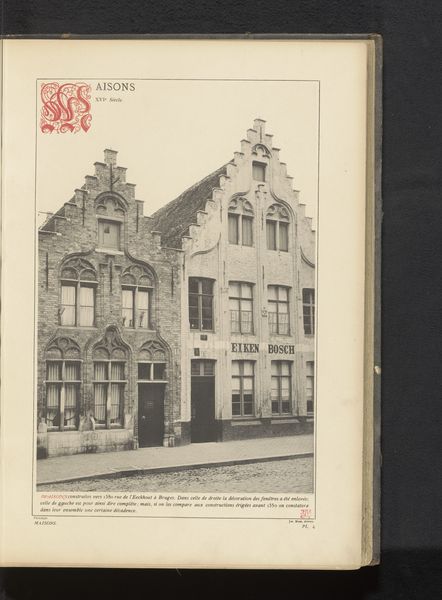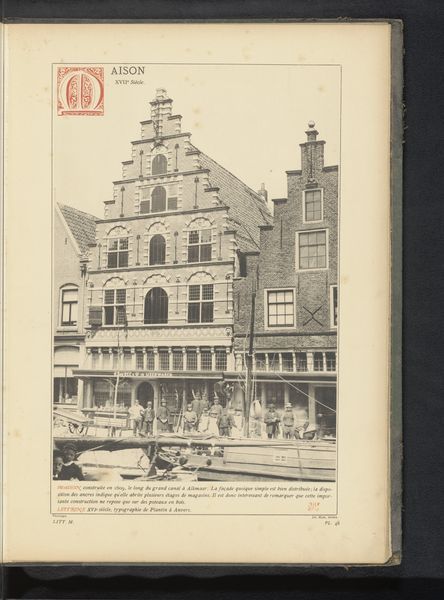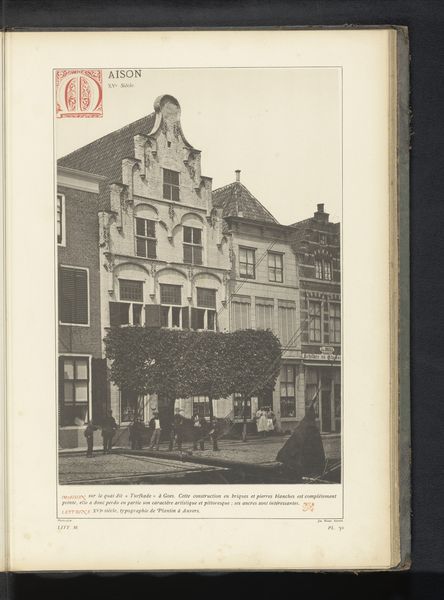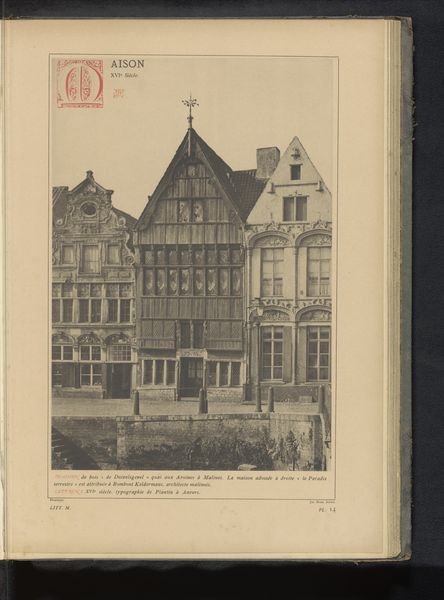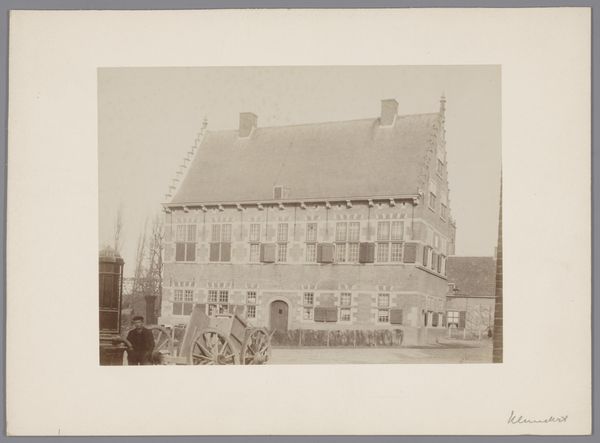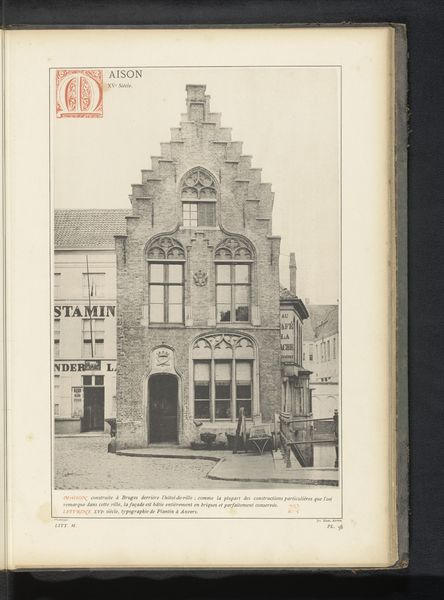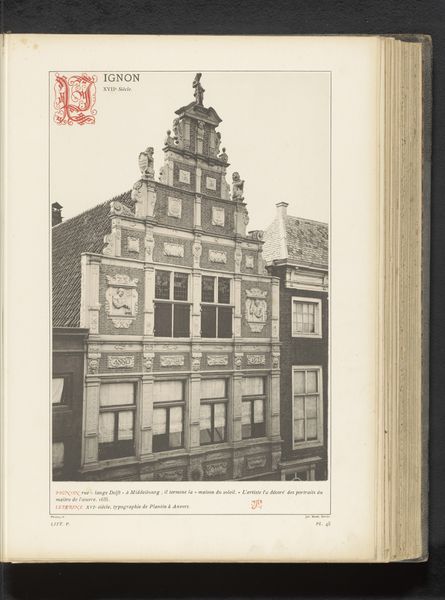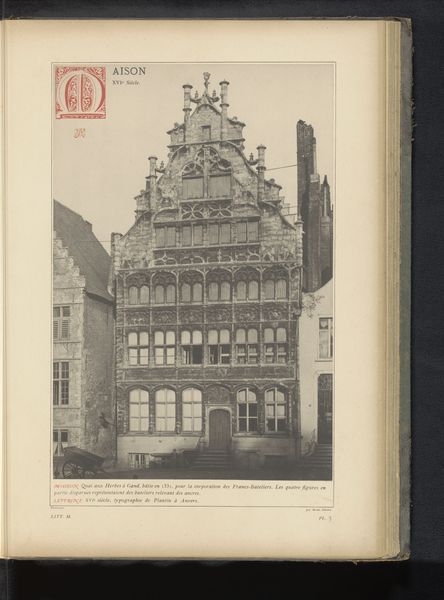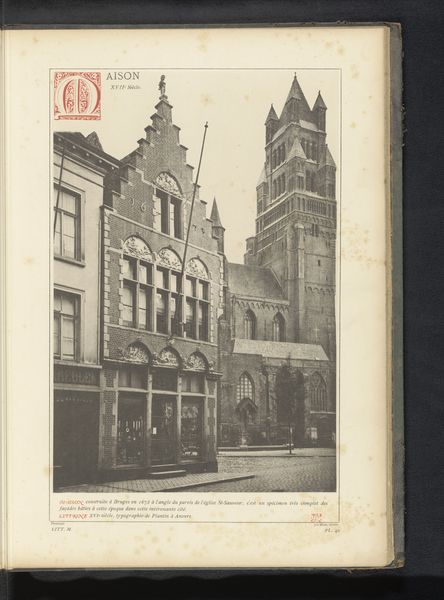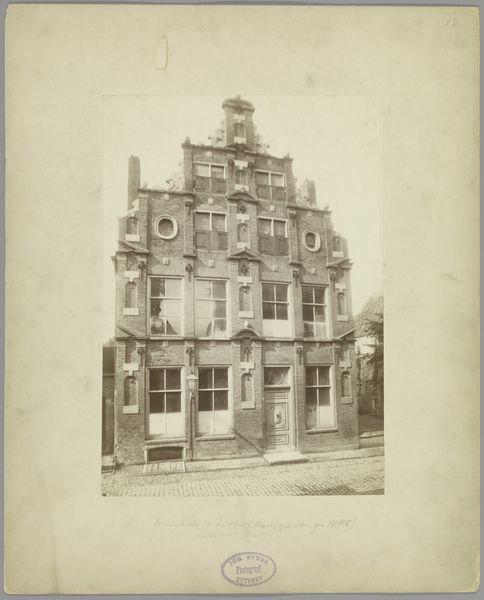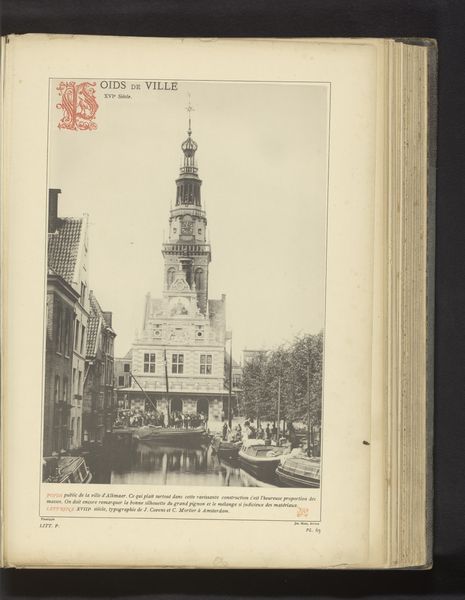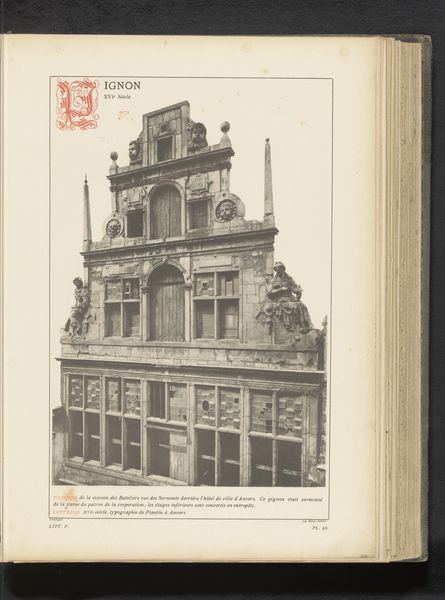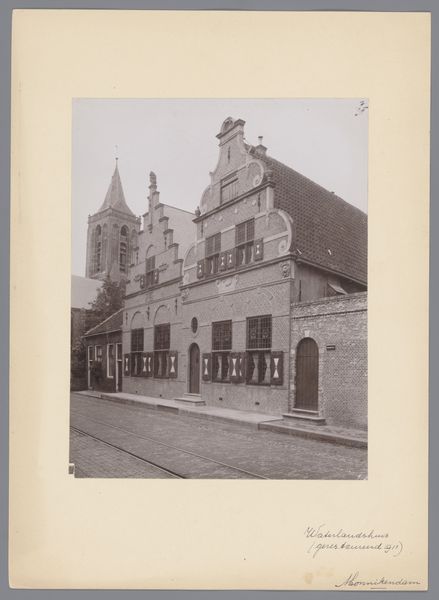
print, photography, architecture
# print
#
photography
#
orientalism
#
cityscape
#
architecture
Dimensions: height 339 mm, width 232 mm
Copyright: Rijks Museum: Open Domain
Editor: This photographic print, titled "Waag te Enkhuizen," dates to before 1881 and depicts architecture within a cityscape. The building appears solid, a structure of significant importance. How might we interpret the symbols inherent in its architectural style and presence? Curator: It's fascinating to consider what visual stories architecture can tell, isn't it? Observe the stepped gable, the symmetry, and the prominent doorway. These elements speak of civic pride and commercial function. Weighing scales, traditionally housed in buildings like this, weren't merely tools. They were potent symbols of justice, balance, and fair exchange, weren’t they? Editor: So, the building itself functions almost as a logo, projecting particular cultural values? Curator: Precisely! Think of the visual vocabulary at play here: the solid brickwork conveying reliability, the elevated position subtly communicating authority, and the symmetry echoing principles of order. How do you imagine these elements resonated with the people who lived and worked around this building? Editor: It sounds like it was very reassuring. What also strikes me is the large entrance in the foreground that contrasts the detailed construction and windows of the main facade. Curator: A brilliant observation! It emphasizes functionality and practicality, making it a very open civic space. Imagine merchants bringing goods to be weighed, a bustling hub of commerce under the watchful gaze of civic order. How would the constant activity around such buildings have strengthened communal identity? Editor: Thinking of it like that brings the image alive in my mind. Now I’m imagining that bustle, which feels almost timeless because it has been captured here. Curator: Yes! This photo is itself an artefact now, capturing that balance between historical record, memory, and symbol that makes art so enduring.
Comments
No comments
Be the first to comment and join the conversation on the ultimate creative platform.
